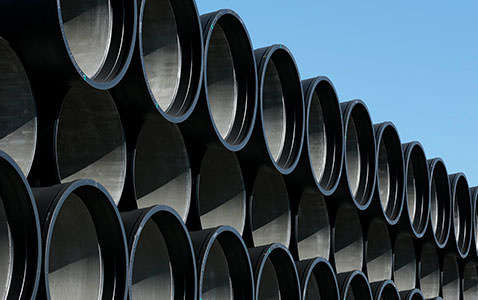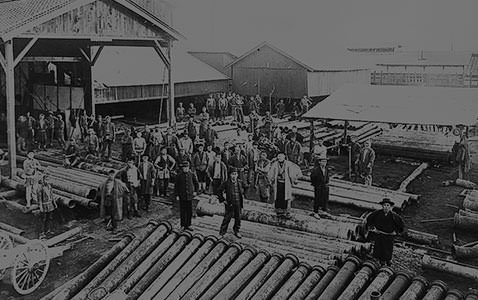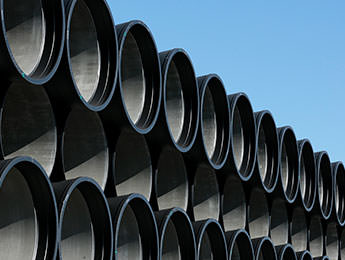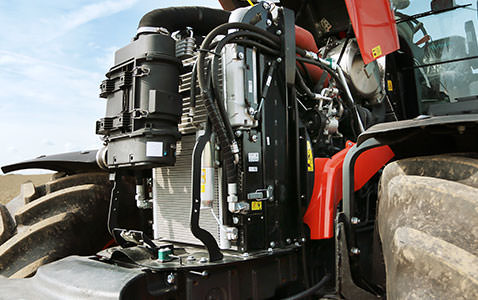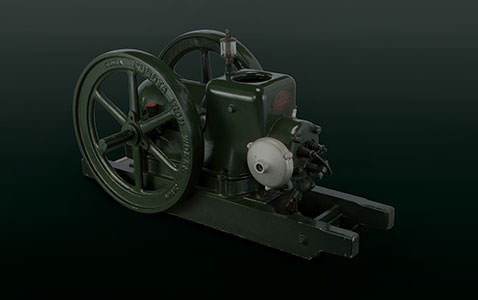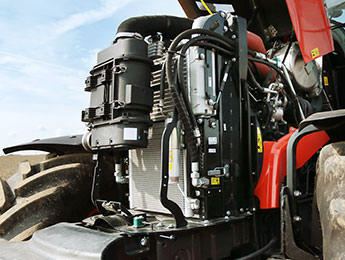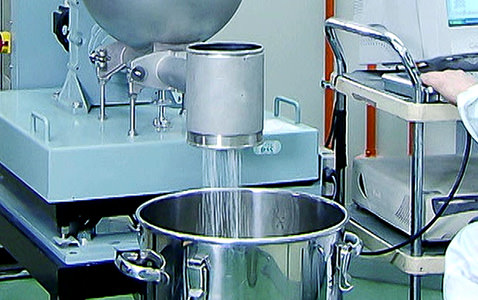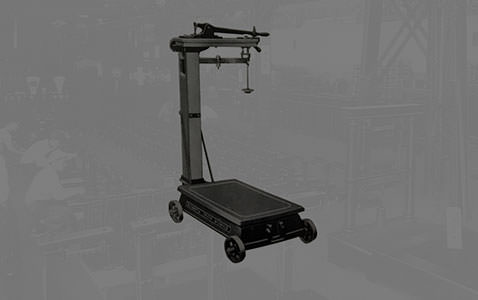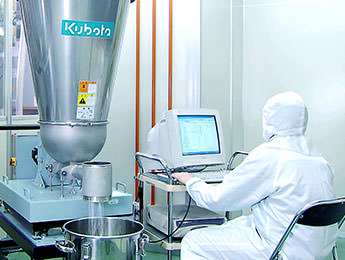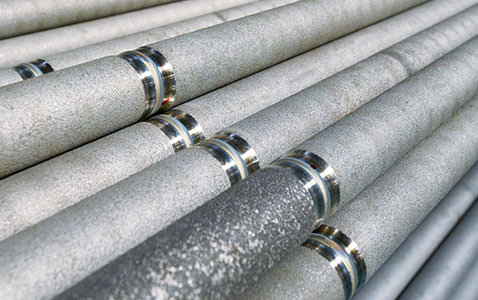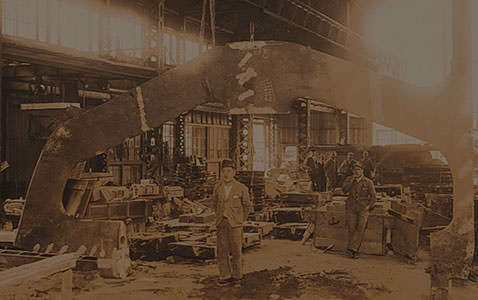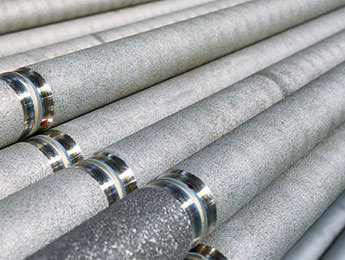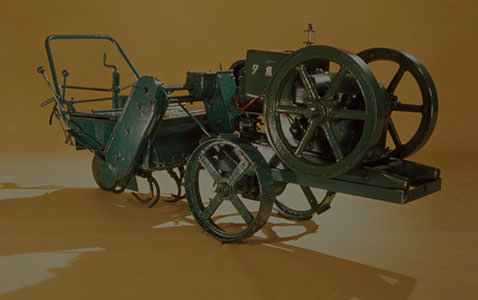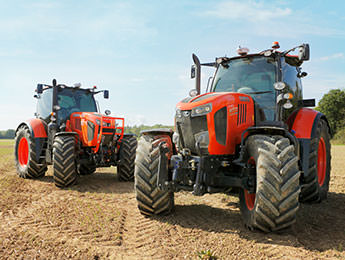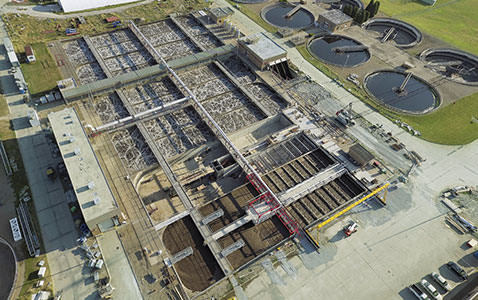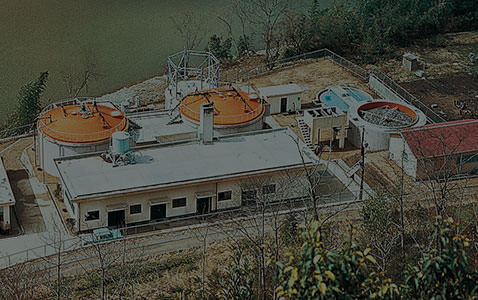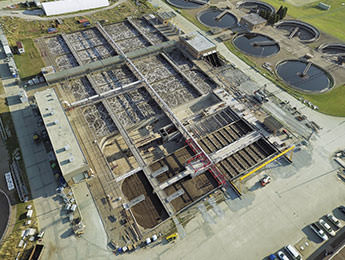Pursuing Operator-Friendliness. Small Construction Equipment Shouldering Urban Infrastructure Development
Construction Machinery
Kubota specialized in small construction machinery. This was also an expression of Kubota’s approach to realizing its corporate philosophy to contribute to the development of urban infrastructure, where people spent their daily lives. Seeking to understand the construction sites and workers, it focused on operator friendliness in the development of its products. The developers visited and experienced the construction sites in person, pursuing the ‘feeling’ of users. Kubota’s construction equipment received high acclaim in Japan as well as abroad. It became a leading company for small construction machinery, contributing to the development of urban infrastructure.
Scroll Down
Supporting the Industry with Measure
Electronic Equipped Machinery
Meeting Various Industrial Needs
Materials
1940-1960s
Public Infrastructure Development and the Rise of Construction Machinery
One of the greatest issues for Japan after World War II was developing public infrastructure. Major construction projects took place in various parts of the country for electric power sources, highways, transportation and communication networks as well as increasing port facilities. During such a time, various manufacturers worked hard altogether to improve construction machinery.
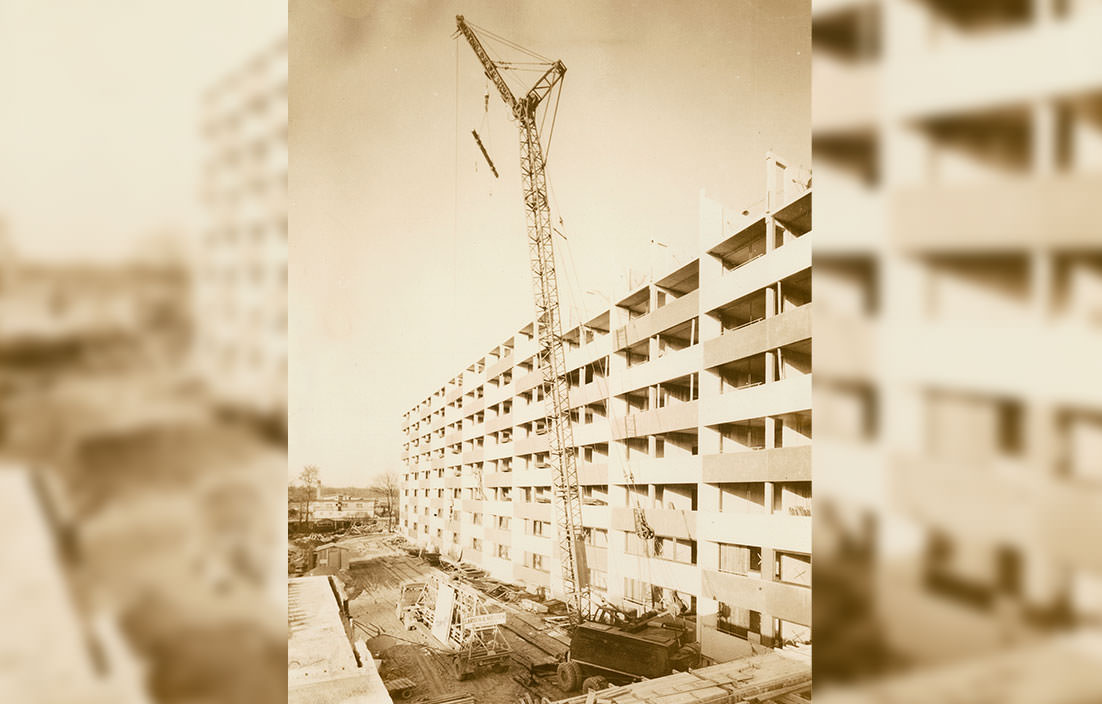
Mobile Crane
A Challenger in the Construction Equipment Industry
In 1953, Kubota renamed itself as Kubota Tekko Co., Ltd., entering the construction equipment industry. This was Kubota’s declaration to support the development of urban infrastructure.
1960-1970s
The Arrival of the “Building a New Japan” Boom
The “Building a New Japan” boom, which occurred amidst rapid economic growth, prompted many construction projects around the country. The demand for construction machinery also grew substantially, and intense competition between machinery manufacturers rose. Furthermore, construction machinery further evolved with the introduction of hydraulic technology.
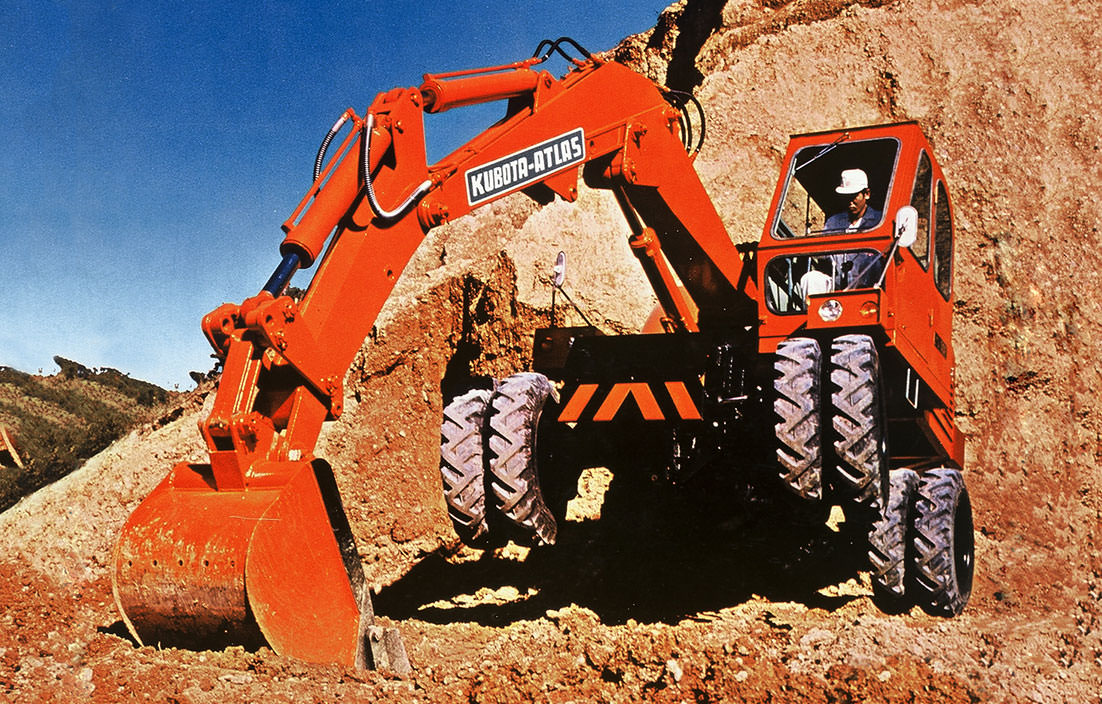
Hydraulic Shovel
The Progress in Hydraulic Technology Bringing Dynamic Progress to Construction Machinery
Around this time, hydraulic technology introduced from Europe led to the dynamic development of construction machinery. The hydraulic drive system was compact and lightweight with excellent maneuverability and was widely used for large machinery.
1970-1980s
Overcoming the Oil Crisis
With the first oil crisis in 1973, the economy experienced a sharp downturn, and the demand for large-scale construction machinery also showed a sudden drop. At the same time, strict regulations were put in place to control noise and vibration at construction sites, starting a transition to equipment appropriate for a new era that departed from the conventional thinking that prioritized efficiency.
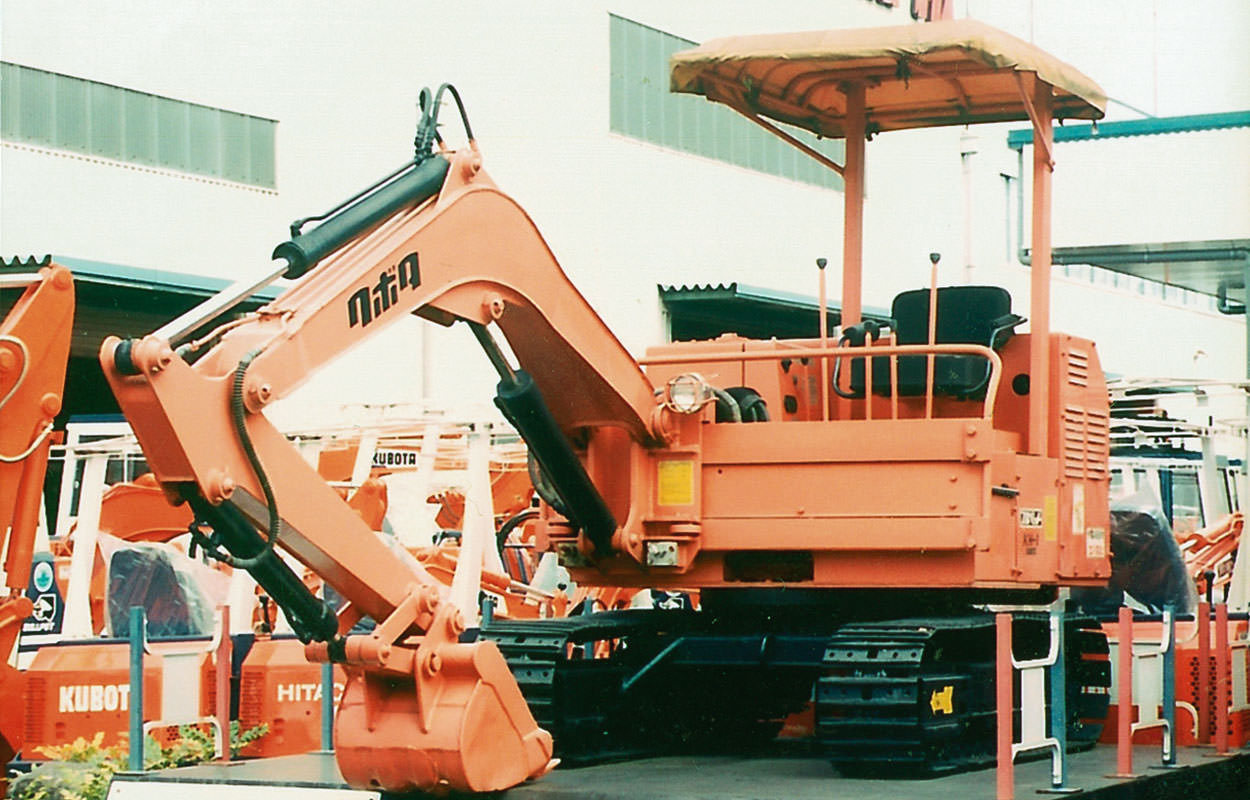
KH Series
From Large Construction Machinery to Small Construction Machinery. Creating the Foundation for Today’s Kubota Construction Machinery
As demand for large construction machinery declined due to the oil crisis, small-scale urban projects increased as well as the sales of small construction machinery. In response, Kubota changed course and started to promote compact construction machinery for urban infrastructure development as the third pillar of its business.
1990s-
Rising Consideration for the Global Environment and Evolving Construction Machinery
As we entered the 1990s, the serious impact on the natural environment caused by industries became apparent and recognized as a global issue that needed to be immediately addressed. Strict legal restrictions, such as emissions regulation, spread to the construction machinery industry, and construction machinery changed according to the time.
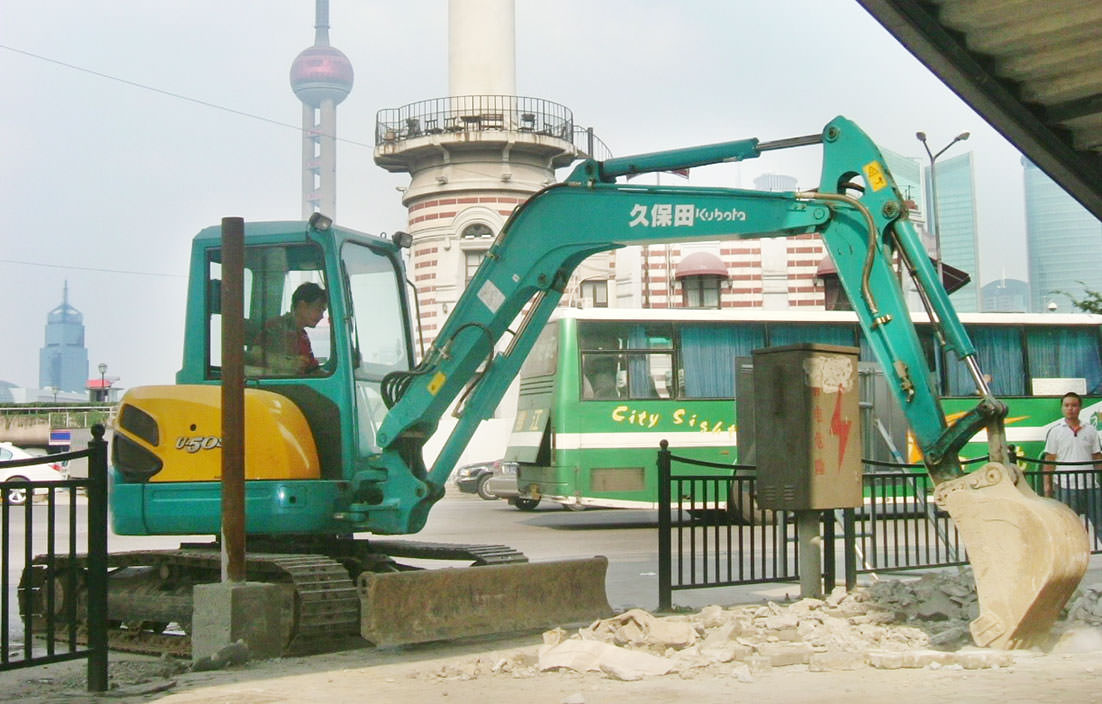
KINGLEV Series, KX080, CTL, SSL
To Asia, to Europe. Kubota’s Construction Machinery Striding Around the Globe
Kubota’s construction machinery played an active role in Japan and had moved on to the world stage. It received high acclaim in the United States, Europe, and Asia by responding to the local needs and having users in mind.
